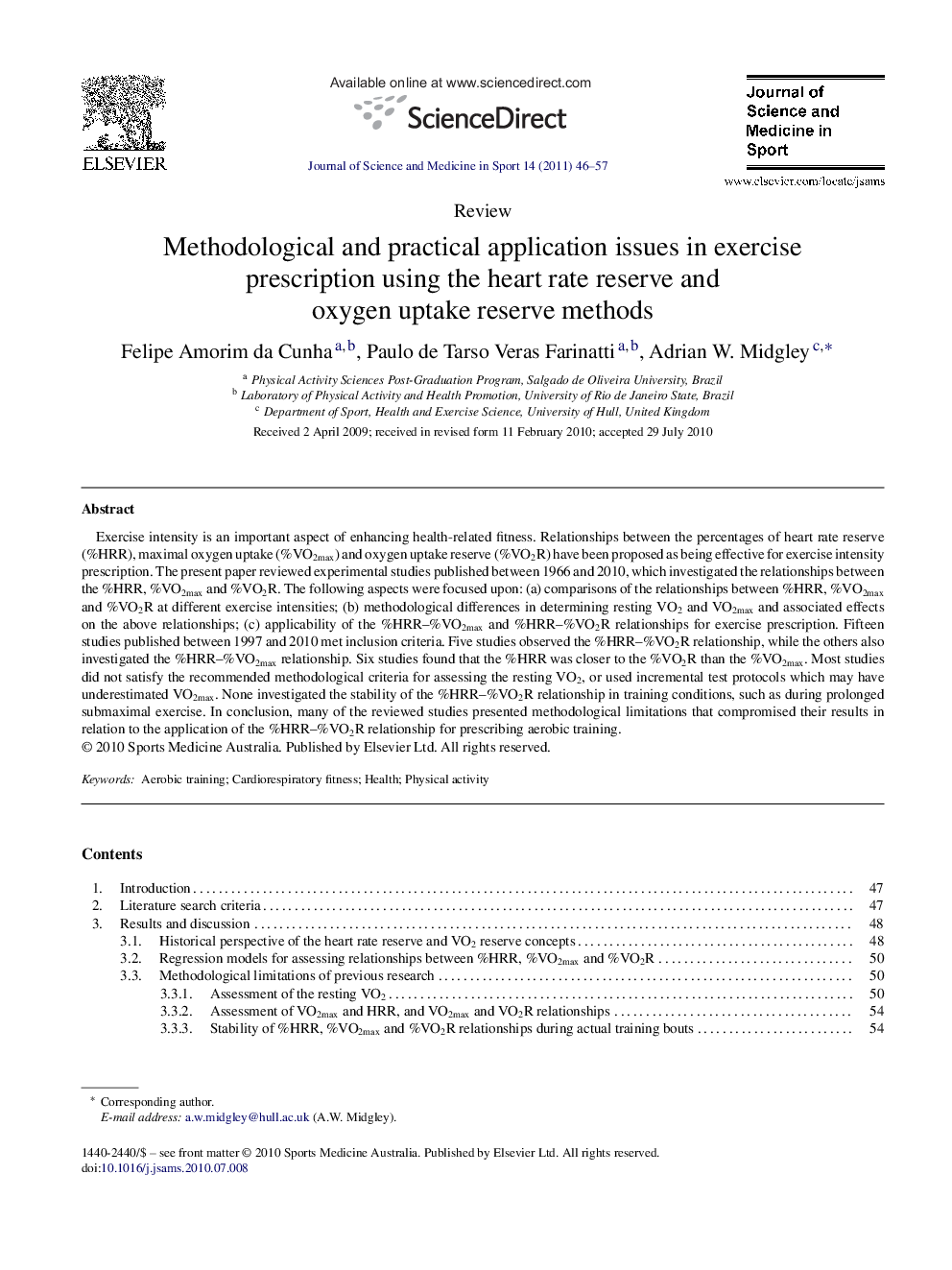| Article ID | Journal | Published Year | Pages | File Type |
|---|---|---|---|---|
| 2701659 | Journal of Science and Medicine in Sport | 2011 | 12 Pages |
Exercise intensity is an important aspect of enhancing health-related fitness. Relationships between the percentages of heart rate reserve (%HRR), maximal oxygen uptake (%VO2max) and oxygen uptake reserve (%VO2R) have been proposed as being effective for exercise intensity prescription. The present paper reviewed experimental studies published between 1966 and 2010, which investigated the relationships between the %HRR, %VO2max and %VO2R. The following aspects were focused upon: (a) comparisons of the relationships between %HRR, %VO2max and %VO2R at different exercise intensities; (b) methodological differences in determining resting VO2 and VO2max and associated effects on the above relationships; (c) applicability of the %HRR–%VO2max and %HRR–%VO2R relationships for exercise prescription. Fifteen studies published between 1997 and 2010 met inclusion criteria. Five studies observed the %HRR–%VO2R relationship, while the others also investigated the %HRR–%VO2max relationship. Six studies found that the %HRR was closer to the %VO2R than the %VO2max. Most studies did not satisfy the recommended methodological criteria for assessing the resting VO2, or used incremental test protocols which may have underestimated VO2max. None investigated the stability of the %HRR–%VO2R relationship in training conditions, such as during prolonged submaximal exercise. In conclusion, many of the reviewed studies presented methodological limitations that compromised their results in relation to the application of the %HRR–%VO2R relationship for prescribing aerobic training.
